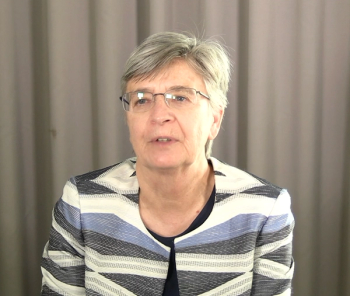
In a recent study out of Central South University in Changsha, China, scientists tested different cosine similarity algorithms to test for illegal adulterants in drugs.

In a recent study out of Central South University in Changsha, China, scientists tested different cosine similarity algorithms to test for illegal adulterants in drugs.

Here are the top five articles that the editors of LCGC International published this week.

In a recent study, scientists tested how effective dynorphin 1-17 peptides can be in treating chronic rhinosinusitis with nasal polyps (CRSwNP).

Webinar Date/Time: Thu, Apr 4, 2024 11:00 AM EDT

Webinar Date/Time: Wed, Apr 10, 2024 10:00 AM EDT

A recent study dissects a Chinese herbal medicine to determine why it is effective in treating polycystic ovary syndrome (PCOS).

At Pittcon 2024, LCGC International editor Patrick Lavery sat down with Michael Marty of the University of Arizona to talk about the ongoing work in his laboratory.

At Pittcon 2024, LCGC International editor Patrick Lavery sat down with Susan Olesik of The Ohio State University to talk about her group’s current work.

A group of Canadian scientists recently measured how effective different solutions are in measuring ochratoxin A levels in flour samples.

This article explores the key challenges analytics and mass spectrometry solve within the biopharmaceutical industry.

The advantages of a native anion exchange method coupled to mass spectrometry for charge heterogeneity analysis of immunoglobulin G4 (IgG4)-based mAbs are described.

At Pittcon 2024, LCGC International editor Patrick Lavery sat down with John R. Yates of the Scripps Research Institute to talk about his work in mass spectrometry and proteomics.

Researchers from Austria, Greece, and Italy conducted a study to analyze volatile organic compounds (VOCs) present in Irish and Scotch whiskys using solid-phase microextraction (SPME) Arrow with comprehensive two-dimensional gas chromatography coupled to mass spectrometry (GC×GC–MS) to examine the organoleptic characteristics that influence the taste of spirits.

This study attempted to improve upon assessment of quality prior to processing of single cell proteomics data, describing a “lightweight” script of fewer than 100 lines of code written in the programming language Python.

A recent study examined using high performance liquid chromatography (HPLC) with inductively coupled plasma–tandem mass spectrometry (ICP-MS) to detect ethylene-thiourea (ETU) and propylene-thiourea (PTU) in fruits and vegetables.

Scientists from Hangzhou, China used ultra-performance liquid chromatography mass spectrometry and non-targeted metabolomics studies to help find treatments for colorectal cancer.

A new study from Guangxi Normal University examines biogenic amine (BA) detection in food samples by using surface-assisted laser desorption/ionization–time-of-flight mass spectrometry (SALDI–TOF-MS) in conjunction with a molecularly imprinted polymer (MIP).

Scientists from Murcia, Spain recently created a new method for mycotoxin screening in human tissues using dispersive liquid–liquid microextraction and liquid chromatography–mass spectrometry.

Sara E. Kern and her team of the U.S. Food and Drug Administration (FDA) tested different analysis methods for rapidly screening for poppy seeds in food samples.

A group of Taiwanese scientists have recently created a new method for assessing food quality and detecting histamine in wine samples.

These lectures focused on method development and applications of mass spectrometry for bioanalytical, natural product, and agricultural studies.

At Pittcon 2024, Pittsburgh Analytical Chemistry Award winner John Yates headlined a symposium focusing on perfecting proteome research down to the single-cell level.

During a workshop at Pittcon, David Alonso of LECO Corporation discussed how gas chromatography–time-of-flight mass spectrometry (GC-TOFMS) can be used to identify polyfluorinated alkyl chemicals (PFAS) chemicals in anti-fog product solutions.

On February 25, a Pittcon oral session, titled “Detection of PFAS and other Polyfluorinated Analytes,” took place at the San Diego Convention Center in San Diego, California. This session included six talks that covered a variety of analytical techniques currently being used in per- and polyfluoralkyl (PFAS) analysis.

The tool, written in the Python programming language, was designed to rapidly quantify the reporter ion peaks in a file within each of its tandem mass spectrometry (MS/MS) spectra.